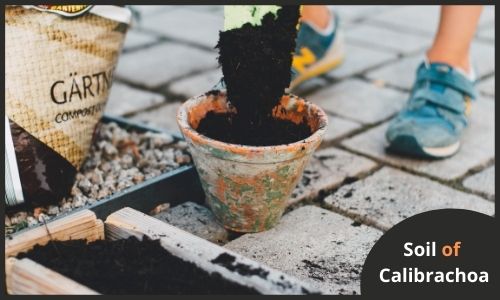Hye Friends!
So, guys! Today In this article, we are going to tell you about (How to Grow and Take Care for Calibrachoa ?). So, if you want to know about (How to Grow and Care for Calibrachoa ). and If you don’t know about this (How to Grow and Care for Calibrachoa ?) then please just Read this Article till the end.
Calibrachoa also called a million bells, seashore petunia, or trailing petunia. This plant is a very popular plant outdoor, most people grow them in containers. They are popular in garden design for use as blooming containers or colorful hanging baskets and window boxes.
It is a tender perennial which mounds of leaves, growing only 3 to 9 inches (7.5–23 cm.) Tall, with stems and it’s come in various flowers colors in shades of pink, white, magenta, purple, yellow, bronze, blue, Red. Since Calibrachoa are hybrids, they cannot be grown from seed.
This plant comes in a rainbow of colors, solid and two-tone, stripes, patterns, and stunning double blooms. Calibrachoa is a prolific bloomer that produces 1-inch flowers until frost, which looks like a small petunia. These plant flowers are so pretty, bell-like flowers that look like mini petunias.
This plant needs little care.
They require enough sunlight and water. They require at least 4-6 hours of direct and filtered sun in a day. If they will not get enough sunlight or if you are planting them in the partial shade then they will look tired and the bloom will be reduced and the plant will begin to spread.
Calibrachoa has a trailing habit and spreads best on the sides of window boxes, pots, and hanging baskets. These plants are members of the Solanaceae family and calibrachoas are native to South America. They are found in the same area as the petunia of South America. Calibrachoa is a smaller plant with smaller flowers as compared to petunia.
The leaves of these plants are thick, fleshy, and sticky structured and the Calibrachoa flowers generally crawl over their stems which are 6″-15″ inches long.
How to Care for Calibrachoa?

This plant is not hard to care for. This plant will bloom all summer as long as its needs are met. The soil should be kept moist but not soggy Especially in full sun areas because they can succumb to the scorching heat of summer. Container plants require more water. The most important elements for this plant are water, sunlight, and fertilizers. Calibrachoa needs at least six hours of full sun although they can tolerate partial shade.
And if you are planting them in containers then For containers and hanging baskets, use a quality all-purpose potting mix that drains well. For bedding performance, the soil should be well amended and draining quickly.
They need water also. If you live in a warm area then water them because in summer soil can easily dry because of hot weather so, During hot, dry weather give them water regularly. First, check the soil and if you feel that soil is dry then, it’s time to water, so give them water. Saturate the entire container so that the liquid drains from the bottom. Allow it to dry slightly between watering.
Light
Calibrachoa bloom best in full sun with 6 to 8hours of direct sunlight each day. They can tolerate partial shade also. especially in warm regions, where plants that receive some shade are likely to survive the summer months. Inadequate sun exposure usually results in reduced blooms
Soil

Plant Calibrachoa in soil which is well-draining and rich in organic material. They like fast-draining potting soil. This plant prefers that soil that has a neutral pH level, neither too acidic nor too alkaline.
When planting in garden beds, amend with organic material to ensure prosperity, and make sure the soil drains well. A mulch is recommended to keep the soil moist and the root system.
Water
These plants need regular watering. Give them water every week and give them more water if you grow it in a container. Give them more water in warm weather and if you live in warm areas. Because in warm places soil can easily dry so, it needs to be kept well hydrated. But before watering check the soil, is it dry or not? So, firstly stick your finger into the soil up to the second knuckle, and if your soil feels dry at your fingertips.
Deepen the water until it runs out of the bottom of your pot. Do not water again until the soil dries out again. But make sure that do not overwater the plant because it can encourage root rot.
Temperature and Humidity
This plant is pretty drought- and can tolerant, heat and even can tolerate cold. But for the best blooms, don’t let them dry out too often. It prefers temperatures between 55 and 65 degrees Fahrenheit.
This plant can be brought outside in the spring months, and it can tolerate light frost. On the other end of the spectrum, hot weather and dryness can be stressful for the plant. You can revive faded foliage with daily misting, but be careful not to mist in direct sunlight, as this can burn the leaves.
Fertilizer
They are very heavy feeders So, fertilize them regularly for continued blooms. Use a water-soluble fertilizer every two weeks or add a slow-release granular fertilizer to the soil at planting, replenishing according to directions.
Feeding is especially necessary at the end of the season to promote late blooming. Be careful not to over-fertilize — follow the directions on the plant food label closely. Leaves turning pale green or yellow are a sign that the plant needs fertilizer, or possibly more sun.
Propagating Calibrachoa

Calibrachoa plants grown in gardens are hybrids that produce few seeds. And because many varieties are trademarked hybrids, vegetative propagation via cuttings is technically illegal. If you try to propagate by cuttings, the process is as follows
•Try to find a stem that has small buds but no flowers on it. For this u have to use a clean, sharp cutting tool, then cut the stem at least 6 inches from the tip, then remove any lower leaves.
•Now, Place your cuttings in an equal mixture of half potting soil and half peat moss. Water well.
•place the pot in bright light, and keep the cuttings moist and warm (about 70 degrees Fahrenheit). Roots should begin to develop within a couple of weeks.
Conclusion on grow and care of calibrachoa
So guys, If you are interested in growing Calibrachoa then definitely grow it because it is a very beautiful plant and it has very pretty flowers also.
So, friends, I hope you will get some information from this post and I hope you like this post If you liked this post then definitely share this post with your friends also Thanku.
Must Read: How to Make a Mason Jar Terrarium
Must Read: How to make a perfect Butterfly Garden | Beautiful Garden


Do you have to pinch off old blooms?
No. They are self cleaning